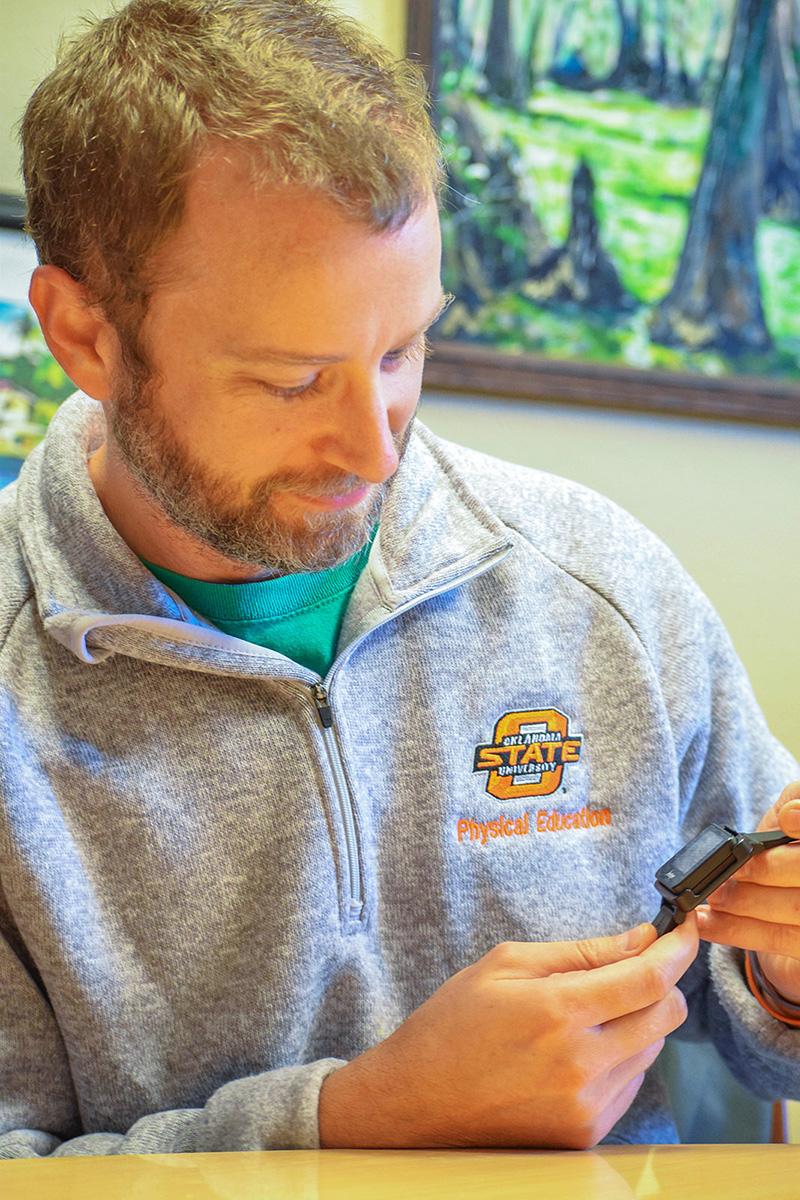Fitness monitors may not motivate
Monday, June 6, 2016

Research conducted at Oklahoma State University shows wearable fitness monitors might not help you go the extra mile after all.
Timothy Baghurst, associate professor of physical education at OSU, his research assistant Kevin Richards, and Ali Boolani, associate professor of physical therapy and physician assistant studies at Clarkson University in Potsdam, New York, recently conducted a study to see how active 36 OSU physical education students would be knowing they were being monitored.
Baghurst and colleagues split the students into two groups and gave each student a monitor to wear for two weeks. Each group was told the monitors would track sun exposure one week and steps per day the next week.
“What we wanted to find out is if the students know they are having their physical activity monitored,” Baghurst said. “Are they going to get more physical activity during that week compared to the week when we are not measuring?”
The results were not different. The amount of physical activity when the students knew they were being monitored was the same as the week they were unaware, said Baghurst. Their number of steps per day was also just above the minimal standard for an average person, which is about 10,000.
“It was not a declarative statement they are serious about their fitness and activity levels,” he said. “It was more they were just fit enough to be healthy.”
Routine fitness testing is an important part of being a physical education major and having an accredited program. Physical education majors should be modeling physical activity and fitness above students in another major without the requirement, said Baghurst. Students in the study often just met the minimum fitness requirements and stopped probably due to a lack of motivation, he said.
“When somebody buys something like a [monitor] it is because they are already motivated to use it,” Baghurst said. “[Monitors] can work with a predetermined desire like, ‘I want to be physically active and this will help me become more physically active.’”
If used improperly, a fitness monitor will not make the wearer healthier without a goal or motivation, said Baghurst. Fitness monitors are tools to accomplish a set goal, not a quick fix.
“This is just a tool to inform you of achieving your goal,” Baghurst said. “It is not going to give me a magic pill to make me exercise.”
Even if the motivation is there, students face more of a challenge being more active due to the amount of time spent studying and sitting in a classroom, said Boolani.
Physician assistant and physical therapy students at Clarkson University average about nine hours of sitting in a classroom a day throughout the week, said Boolani. Due to the lack of exercise they get, the average amount of weight gained in the first year is 30 pounds.
The amount students exercise could be linked with the culture of the university, said Baghurst.
“Here at OSU, we strive to promote health and wellness across the campus. Students may be more apt to engage in physical activity because it is an environment which fosters it versus an institution where it’s not important,” he said.
Lauren Flynn, a health education and promotion junior at Oklahoma State, wears her fitness tracker every day.
“It does not motivate me,” said Flynn, who was not involved in Baghurst’s research. “It is a helper. A tool. I’m not going to go run because I need my steps.”
Flynn said she works out often during the school year and if she happens to get steps during her workout, she is happy. Flynn said group challenges provide more motivation. She challenged a friend once and the competition made her exercise more.
“The terminology is social support,” Baghurst said. “Social support is a huge factor in exercise adherence.”
Being involved in a group exercise challenge makes each individual feel accountable and responsible, he said.
“It boils down to why are you doing it?” Baghurst said. “Why are you wearing it? That is going to be the difference.”
Story by Sage Emily Watson
PHOTOS: https://www.flickr.com/photos/ostatenews/albums/72157669182467126
